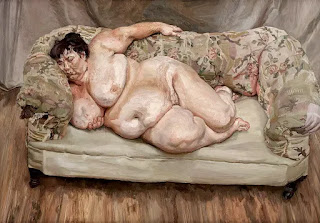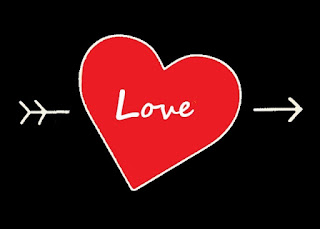Fragment of stained glass (19th century)
7.2 x 3.2 cm (whole object)
I.
Stéphane Sitayeb's essay on sexualised objects in D. H. Lawrence's short fiction [1]
is a fascinating read if, like me, you are interested in such things.
However, I'm not sure I share his insistence on giving material items an all-too-human symbolic interpretation. Sometimes, a white stocking is a white stocking and that's precisely wherein its allure resides for the fetishist and object-oriented philosopher, if not, perhaps, for the literary scholar keen to open a "new figurative level of reading".
And his claim that Lawrence resolved to "awaken his readers' spirituality by inducing a shock therapy
paradoxically based on physicality, with explicit references to
sexualized items and licentious tendencies", is not one I agree with either. In fact, I don't think Lawrence gave a fig for his readers' spirituality.
And, again, just because an object stands upright, that doesn't always mean it has phallic significance; even Freud recognised that sometimes a cigar is just a cigar and doesn't represent anything, or always express unconscious human desire. Thus, when Sitayeb says that "Lacanian readings of Lawrence have fathomed the hidden meaning of phallic objects in his fiction", I want to beat him about the head with a large dildo [2].
II.
Moving on, we discover that Sitayeb wishes to discuss objects in terms of Eros and Thanatos; i.e., as objects that lead to fulfilment on the one hand, and as objects that lead to self-destruction on the other. He rightly points out, however, that Lawrence's work demonstrates a complex connection between Love and Death and thus his fictitious objects "stimulate at once procreation and destruction, creativity and annihilation".
The result is that death becomes sexy and sex becomes decadent and perverse; not so much tied to an ideal of love, as to numerous paraphlias, often involving objects or the objectification of body parts. Sitayeb mentions several of these, but by no means exhausts the number of kinky elements in Lawrence's work (elements which I have discussed elsewhere on Torpedo the Ark: see here, for example).
III.
Sitayeb's reading of 'The Captain's Doll' in terms of agalmatophilia and pygmalionism is good. Perhaps not as good as mine in terms of dollification - click here - but good nonetheless. He certainly makes some interesting points, such as this one: "The interchangeability between subject and object is conveyed by an inversion of the invariable principles governing mechanic and organic matter."
Similarly, his reading of 'Sun' is good, but not as good as mine: click here. Sitayeb still thinks Juliet's story simply involves an anthropomorphic type of sexuality and Lawrence's "conception of Nature as a macrocosm incorporating man", but it's far more important philosophically than that.
As for 'The Thimble' - a short story that formed the basis of the 1922 novella The Ladybird - the ornate object in question is not first and foremost a symbol of unfulfilled sexual desire and Mrs. Hepburn's fiddling with it is not a form of symbolic masturbation. This lazy and old-fashioned psychosexual reading just bores the pants off me and I really can't fathom why Sitayeb bothers to refer to it.
IV.
Sometimes, Sitayeb says things that I do not understand: "Lawrence studied the escalation of desire for both objects and subjects in the presence of imitation and rivalry patterns." But that's probably due to my ignorance of theories to do with mimesis on the one hand (I've certainly never read a word of René Girard) and my suspicion of the concept on the other (I have read a fair deal of Derrida and Deleuze). Nevertheless, I enjoyed Sitayeb's reading of the love triangle in The Fox [3].
I also enjoyed his excellent reading of 'The White Stocking' - another story involving a love triangle, but this time one "not only composed of human objects of desire", but also including a material item "sexualized to express an unsatisfied ambition such as an impossible sexual act" (i.e., the white stocking). Sitayeb says that this is more precisely termed a split-object triangle and I'll take his word for that.
Sitayeb also notes:
"In the absence of Elsie’s secret lover [...] the eponymous object acts as a reminder of a passionate adulterous dance and a catalyst reactivating the ecstasy of forbidden desire. In the presence of the object, Elsie is invested with a sexual energy, even away from her lover."
And that's true, although I'm not sure I think Elsie vain and superficial simply because she likes silk stockings and jewellery; I mean, who doesn't? But then, having said that, I did call her a 'pricktease with pearl earrings' in a case study published on Torpedo the Ark four years ago: click here.
V.
Ultimately, what Sitayeb wants to suggest is that within consumer society, objects - be they directly or indirectly eroticised - become dangerous shape-shifting agents, as commodity culture becomes increasingly death-driven. And he thinks that's what Lawrence illustrates in 'Things', a tale which tells of the syllomania of an American couple addicted to collecting beautiful objects:
"Through their syllomania - the pathological need to acquire and hoard objects [...] - the couple [...] indirectly socializes and
sexualizes the various objects that they have purchased to decorate
their home by replacing their usual libido sexualis with a libido
oeconomicus, thus linking Eros to Thanatos."
Sitayeb continues:
"Owning or consuming objects
procures an immediate and transient feeling of satisfaction verging on
ecstasy [...] which is nonetheless quickly replaced by an
impression of void when their desire for objects becomes insatiable."
Again, that's an insightful take on Lawrence's work and I was intrigued to see how Sitayeb related this to Baudrillard's thinking on the collusion between subjects and objects, the latter being an author of special interest to me, as torpedophiles will be aware:
"Baudrillard's main three arguments to account for men's attraction to trinkets are staged in Lawrence's short story. Both philosopher and author highlighted 1) the escapist function of objects of desire, since they represent a spatial and temporal vehicle transporting their owners into the past of various regions and cultures; 2) the feeling of conquest through the act of collecting, as the collector becomes conqueror; and 3) the access to higher social classes, a pose that D. H. Lawrence evokes with satirical overtones through the detached heterodiegetic narrator of 'Things'."
Expanding on this, Sitayeb writes:
"Far from attractive to the reader, the couple's bric-à-brac is presented as an overload of useless items due to an accumulation where all the objects are juxtaposed in a concatenation of long compound substantives preceded by adjectives evoking several national origins with little coherence. Just as every decorative item is deprived of real functionality, the words to name them also consist of mere signifiers for the reader, which confirms Baudrillard's idea that the difference between simple objects and objects of desire lies in "'the object's detachment from its functional, experienced reality'." [4]
Sitayeb concludes:
"Although Lawrence's ideology in 'Things' is comparable to Baudrillard's, the former interpreted the phenomenon as collective, not personal, warning his contemporary readers against the loss of identity resulting from the vain desire for objects, which he perceived as a post-traumatic stigma of a World War One."
VI.
The problem, ultimately, that I have with Sitayeb's reading of Lawrence is that he seems to subscribe to a notion of what Meillassoux termed correlationism - i.e., the idea that "we only ever have access to the correlation between thinking and being, and never to either term considered apart from the other" [5].
Why do I say that - and why does it matter?
Well, I say it because Sitayeb posits a two-way process wherein the desiring human mind shapes the material universe or world of objects, whilst the latter either fulfil or destroy us, and this permanent and privileged relationship is a form of correlationism, is it not?
And this matters because it serves to make reality mind-dependent and I find such anthropocentrism not only untenable but objectionable - be it in Lawrence's work, or readings of Lawrence's work.
Notes
[1] Stéphane Sitayeb, 'Sexualized Objects in D. H. Lawrence’s Short Fiction: Eros and Thanatos', Journal of the Short Story in English, No. 71, (Autumn 2018), pp. 133-147. Click here to read on openedition.org. All lines quoted are from the online version of the essay.
[2] It should also be noted that the phallus is not the same as an erect penis; a confusion that
we can trace all the way back at least as far as Kate Millett, who
claims in her Sexual Politics (1970), that Lawrence is guilty of
transforming his own model of masculinity into a misogynistic mystery
religion founded upon the homoerotic worship of the penis. That's unfair and mistaken, as Lawrence
himself emphasises that when he writes of the phallus, he is not simply
referring to a mere member belonging to a male body and male
agent. For Lawrence, the phallus is a genuine symbol of relatedness
which forms a bridge not only between lovers, but to the future. Thus
fear of the phallus - and frenzied efforts to nullify it in the name of a castrated spirituality, not least by confusing it with the penis - betray a great horror of being in touch.
Writing fifty years after Millett, one might have hoped Sitayeb would've not made this same error. I would suggest he see my Outside the Gate (Blind Cupid Press, 2010), where I discuss all this in relation to the case of Lady Chatterley, pp. 233-246.
[3] My recent take on this novella by Lawrence can be found by clicking here.
[4] Sitayeb is quoting from Baudrillard's Le Système des objets (1968), trans. James Benedict as The System of Objects, (Verso, 1996).
For me, Baudrillard's later work on objects (in relation, for example, to his theory of seduction) is far more interesting; here, he is still too much influenced by Marxist ideas and basically offers a political critique of consumer capitalism - as if, somehow, the subject might still differentiate themselves from the world of things and resist the evil genuis of the object.
[5] Quentin Meillassoux, After Finitude, trans. Ray Brassier, (Continuum, 2008), p. 5.











